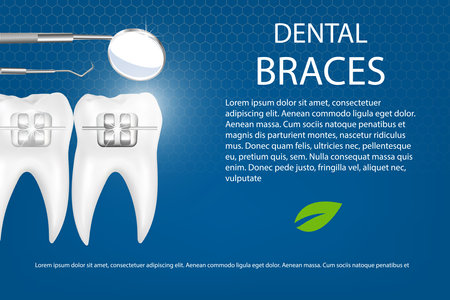1. The Basics of Dental and Vision Insurance in the U.S.
When it comes to staying healthy, most Americans know about health insurance. But dental and vision insurance are often separate, and it’s important to understand how they work and why they matter. Here’s what you need to know about dental and vision insurance in the United States.
How Dental and Vision Insurance Work
Unlike standard health insurance, dental and vision plans focus specifically on your teeth and eyes. They help pay for routine checkups, preventive care, and sometimes larger procedures. Most people get these policies through their employer, but you can also buy individual plans.
Key Differences from Health Insurance
| Type of Insurance | Main Focus | Typical Coverage | Common Exclusions |
|---|---|---|---|
| Health Insurance | Overall medical care | Doctor visits, hospital stays, prescriptions | Dental care, vision exams (usually) |
| Dental Insurance | Teeth and gums | Cleanings, x-rays, fillings, extractions | Cosmetic dentistry (like whitening) |
| Vision Insurance | Eyes and sight | Eye exams, glasses, contact lenses | Surgery (except medically necessary), designer frames |
Why Are Dental and Vision Plans Separate?
Dentists and eye doctors operate differently than general healthcare providers. Their services are more specialized, so insurance companies create separate policies for dental and vision needs. This also lets people pick the coverage that fits their needs best—if you have great eyesight but need a lot of dental work, you can choose a stronger dental plan without paying extra for vision coverage.
The Importance of Preventive Care
Both dental and vision plans put a big focus on preventive care—like regular cleanings or eye exams—because catching issues early saves money in the long run. That’s why most plans cover these visits with low or no copayments.
2. What’s Typically Covered—and What’s Not
When you’re shopping for dental and vision insurance in the U.S., it’s important to know what kinds of services are usually included and where the fine print might trip you up. Let’s break down what you can expect from most plans, and highlight common exclusions or limitations so you can make smart choices for your health and wallet.
Dental Insurance Coverage: The Essentials
Most dental insurance plans divide coverage into three main categories: preventive, basic, and major services. Here’s a quick look at what these usually include:
| Service Type | Commonly Covered Procedures | Typical Exclusions/Limitations |
|---|---|---|
| Preventive Care | Routine exams, cleanings (usually twice a year), X-rays, fluoride treatments for kids | Cleanings beyond the annual limit, cosmetic procedures (like teeth whitening) |
| Basic Services | Fillings, simple tooth extractions, some emergency treatments | Replacement of fillings within a certain timeframe, limited emergency coverage |
| Major Services | Crowns, bridges, dentures, root canals | Coverage may have waiting periods (often 6-12 months), annual maximums apply |
What’s Not Usually Covered?
- Cosmetic Dentistry: Teeth whitening, veneers, and orthodontics for adults are often excluded or only partially covered.
- Pre-existing Conditions: Some plans won’t cover work on teeth that were missing before your policy started.
- Implants: Many basic plans do not cover dental implants or offer limited benefits.
Vision Insurance Coverage: What to Expect
Vision insurance in America typically focuses on routine eye care rather than medical treatment for eye diseases. Here’s how most plans stack up:
| Service Type | Commonly Covered Procedures/Products | Typical Exclusions/Limitations |
|---|---|---|
| Routine Eye Exams | An annual comprehensive eye exam with an optometrist or ophthalmologist | Certain tests or specialist visits may cost extra if not deemed routine care |
| Lenses & Frames | A set allowance for eyeglass lenses and frames every 12-24 months; discounts on upgrades like anti-glare coating or progressive lenses | Lenses or frames above allowance require out-of-pocket payment; designer frames often excluded from full coverage |
| Contact Lenses | An annual allowance as an alternative to glasses; fitting fees sometimes included once per year | If you want both glasses and contacts in the same year, you may pay extra; cosmetic colored lenses may not be covered at all |
What’s Rarely Covered?
- Surgery: LASIK and other vision correction surgeries are almost always excluded from standard vision insurance.
- Treatment for Medical Eye Issues: Issues like glaucoma or cataracts are handled by regular health insurance, not vision insurance.
- Sunglasses: Non-prescription sunglasses typically aren’t covered unless part of a special deal.

3. Understanding Costs: Premiums, Deductibles, Copays, and Networks
When it comes to dental and vision insurance in the U.S., understanding how much you’ll actually pay is just as important as knowing what’s covered. Let’s break down the main cost components so you can make smart choices for yourself and your family.
Key Cost Components Explained
| Term | What It Means | Example |
|---|---|---|
| Premium | The monthly amount you pay to have insurance coverage, even if you don’t use any services. | You pay $25 every month for your dental plan, whether or not you go to the dentist. |
| Deductible | The amount you must pay out-of-pocket each year before your insurance starts sharing costs. | Your vision plan has a $50 deductible. You pay the first $50 of costs each year yourself. |
| Copay | A fixed fee you pay for a specific service, like a dental cleaning or an eye exam. | You owe a $10 copay at every eye doctor visit, regardless of the total bill. |
| Coinsurance | The percentage of costs you pay after meeting your deductible. (Not all plans use coinsurance.) | After your deductible, your dental plan covers 80% and you pay 20% for fillings. |
How Networks Affect Your Costs
Dental and vision insurance plans often have provider networks—a group of dentists or eye doctors who agree to offer services at lower rates for plan members. Here’s why networks matter:
- In-Network Providers: Lower prices, more coverage, fewer surprise bills.
- Out-of-Network Providers: Higher out-of-pocket costs, sometimes no coverage at all.
| In-Network | Out-of-Network | |
|---|---|---|
| Your Cost Example* | $20 copay for an eye exam; insurer pays the rest. | You might pay $60+ for the same exam; insurer may cover less or nothing. |
*Always check your plan’s details to see exactly what’s covered and how much you’ll owe when using in-network vs. out-of-network providers.
Tips to Manage Your Costs Wisely
- Review your plans network directory before scheduling appointments.
- Add up your expected premiums, deductibles, and copays to estimate annual costs.
- If you have favorite dentists or optometrists, check if theyre in-network before enrolling in a plan.
- Ask providers about cash-pay discounts if you ever need to go out-of-network.
Understanding these basic terms—and how networks work—can help you avoid unexpected bills and get the most value from your dental and vision insurance.
4. How to Choose the Right Plan for Your Needs
When it comes to dental and vision insurance, picking the right plan can feel overwhelming. Whether you’re looking at options through your job or buying a policy on your own, it’s important to consider what works best for you and your family. Here are some key things to think about before making your choice.
Compare Plans Based on Your Family’s Needs
Start by thinking about who needs coverage. Is it just you, or do you have kids who need regular checkups and braces? Maybe a spouse who wears glasses or contacts? Different plans offer different levels of benefits for individuals, couples, and families. Make a list of what each family member needs this year so you don’t end up paying for more—or less—than you actually use.
Factors to Consider When Comparing Plans
| Factor | What to Look For | Why It Matters |
|---|---|---|
| Coverage Details | Check what services are included (cleanings, fillings, eye exams, contacts) | Ensures the plan covers the most important treatments for your family |
| Provider Networks | See if your favorite dentist or eye doctor is “in-network” | You’ll pay less out-of-pocket with in-network providers |
| Out-of-Pocket Costs | Look at deductibles, copays, and annual maximums | Affects how much you’ll really spend each year |
| Waiting Periods | Some plans require waiting before certain services are covered | Avoid surprises if you need immediate care or procedures soon after enrolling |
| Pediatric Coverage | If you have kids, see if orthodontics (like braces) are covered | Pediatric dental and vision needs can be expensive without coverage |
| Extras & Discounts | Some plans offer extras like discounts on LASIK or teeth whitening | Adds value beyond basic coverage |
Employer Plans vs. Individual Market Plans
If you get insurance through your job, your employer might cover part of the premium—making it a more affordable option. But employer plans may limit your choices or only allow enrollment once a year during open enrollment. If you’re shopping on the individual market (like through Healthcare.gov or a private insurer), you’ll have more flexibility but may pay more out-of-pocket.
Questions to Ask Yourself Before Picking a Plan:
- How often do I expect to visit the dentist or eye doctor this year?
- Do I want to keep my current provider?
- Am I okay with higher monthly premiums for lower out-of-pocket costs later?
- Does anyone in my family need special services (like orthodontics or specialty lenses)?
- Are there any waiting periods that could affect us?
The Bottom Line: Balance Cost and Coverage
The best plan is one that fits both your budget and your health needs. Take time to read the details, compare the numbers side by side, and ask questions if anything isn’t clear. That way, you can feel confident knowing you’ve picked a dental and vision insurance plan that works for you—and your smile and sight will thank you!
5. Making the Most of Your Benefits
Tips and Strategies for Maximizing Your Dental and Vision Coverage
Understanding your dental and vision insurance is just the first step—making the most of your benefits is where you really get value for your money. Here are some practical tips to help you get the best out of your dental and vision plans:
Stay on Top of Preventive Care
Most dental and vision insurance plans cover preventive services at little or no cost to you. Regular checkups, cleanings, and eye exams can catch problems early and save you money in the long run. Set reminders for your biannual dentist appointments and annual eye exams so you never miss a visit.
Use In-Network Providers
Choosing providers who are part of your insurance network can make a big difference in how much you pay out-of-pocket. In-network dentists and eye doctors have agreed to discounted rates with your insurance company, which means lower costs for you.
| Service | In-Network Cost | Out-of-Network Cost |
|---|---|---|
| Dental Cleaning | $0–$50 | $75–$150 |
| Eye Exam | $10–$25 copay | $50–$100+ |
| Cavity Filling | $20–$80 | $100–$250 |
| Glasses Frames | $0–$50 (after allowance) | $100–$300+ |
*Actual costs vary by plan; check your policy for details.
Understand Your Annual Maximums
Dental insurance often comes with an annual maximum—the total amount your plan will pay each year for care. Once you hit this limit, youll be responsible for any additional costs until the next policy year begins. Keep track of your spending throughout the year, especially if you need extensive dental work. Some people time larger procedures across two calendar years to maximize coverage.
Keep Track of Covered Services and Frequency Limits
Your insurance may only cover certain services—like teeth cleanings or new eyeglasses—once every 6 or 12 months. Know what’s included so you don’t miss out on benefits or accidentally schedule appointments too soon, which could mean paying full price.
Quick Tips to Maximize Your Coverage:
- Schedule regular checkups as soon as your plan allows.
- Always confirm that your provider is in-network before making appointments.
- If you’re planning major dental work, ask about splitting treatments across years.
- Use up allowances for glasses or contacts before they expire each year.
- Review Explanation of Benefits (EOB) statements to ensure claims are processed correctly.
By staying informed and proactive, you can get the care you need while keeping more money in your pocket!


